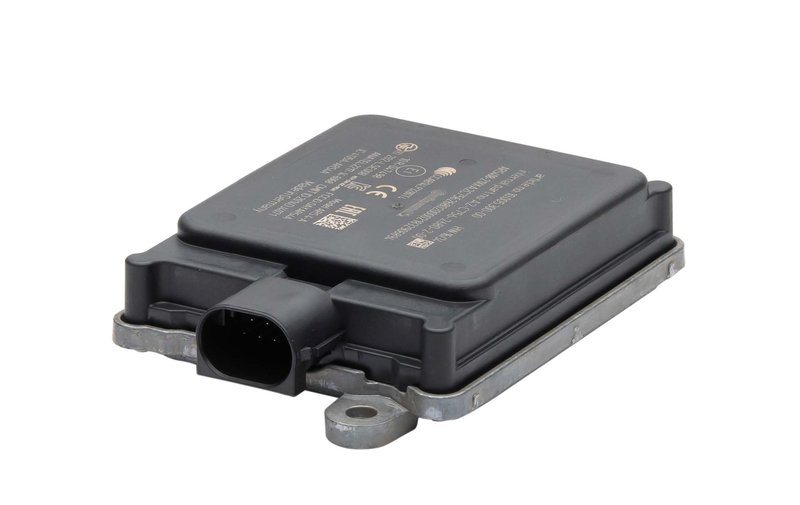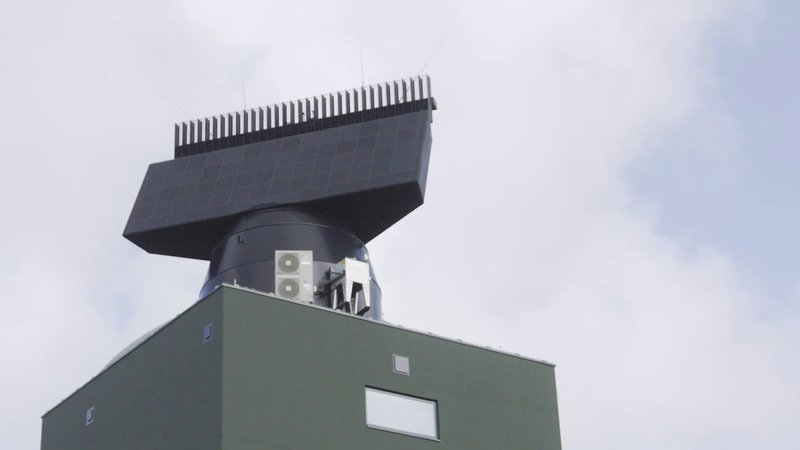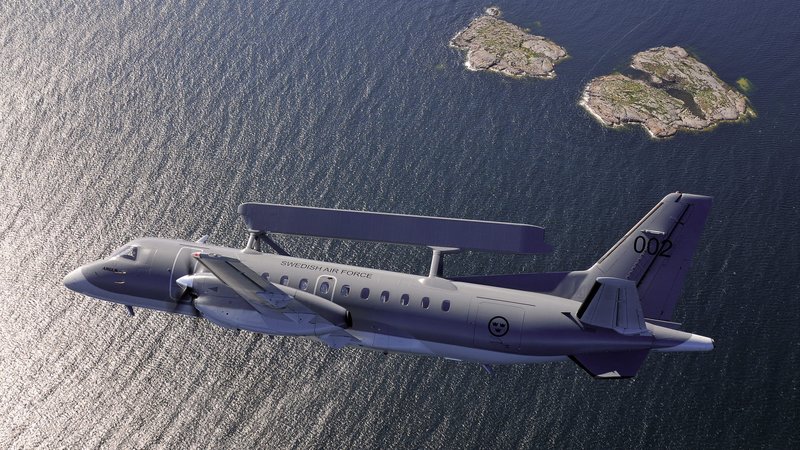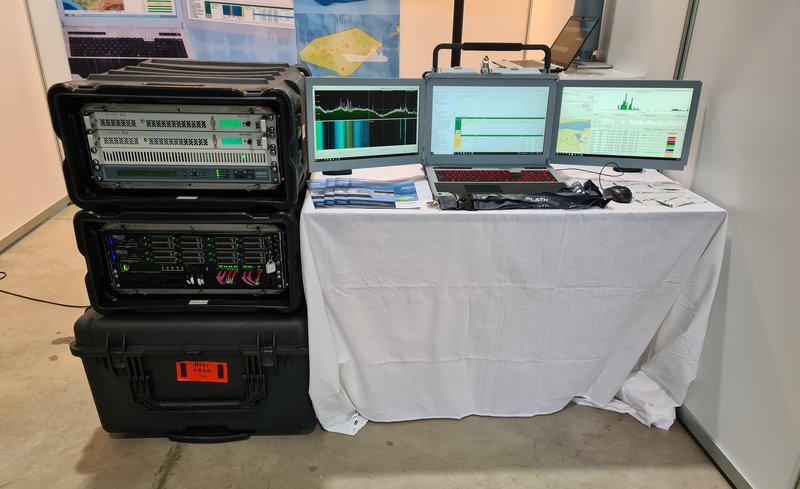Decisive Edge Newsletter | Digital Battlespace | July 2023
Newsletter Sponsor:
How Russia is covertly acquiring Western components for loitering munitions
The author has been told by a highly placed source working closely with Ukraine’s counter-UAV community that several Western components are being used in Kalashnikov Lancet loitering munitions. These include Continental’s ARS 408-21 long-range vehicle radar, and NVIDIA’s Jetson and Jetson AG Xavier systems.
The exact role of these components in Lancet remains unknown. Open sources note that automotive radars have already been used in the UAS research domain and a 2020 article in the Sensors journal noted the technology could be used for accurate earth mapping. Specific applications cited include determination of terrain changes after floods or other meteorological phenomena.

It is possible that the ARS 408-21 77gHZ radar is used by Lancet to sense when it is near the ground or a target on the surface prior to detonation, while the NVIDIA products may be used to aid navigation and/or targeting as they are designed to assist AI and machine learning applications. Are NVIDIA’s products being used for target recognition or terrain-matching navigation?
Sales of NVIDIA chips to Russia were halted by the firm in March 2022 following the latter’s invasion of Ukraine one month before. In October, the company announced it was ceasing all operations in Russia.
Continental meanwhile divested from its operations in Russia in May 2022 after its decision to stop imports and exports to and from the country. In the following September the US government issued new export restrictions for NVIDIA chips used in AI applications to Russia and the People’s Republic of China. Similarly, the German government is taking a tough stance on the export of technologies with military applications.
Despite both companies ending their exports, advanced components are still ending up in the hands of Russian arms companies. Shephard’s source said that controlled components were being accessed via intermediaries in third countries, corroborating an article by independent Russian media outlet IStories.
This article claimed that illicit imports of Lancet components were conducted by a Moscow-based company called ID Solutions under the ownership of one Igor Levlev. He is believed to be based in Dubai, where ID Solutions appears to have a subsidiary in the Russia Cluster of the International City.
Levlev’s profile is available to view on LinkedIn and Shephard’s source claims that ID Solutions funnels components into a company called Mvizion, based in Tashkent, Uzbekistan. From there, the components make their way into the Russian defence industry.
The continuing, illicit use of Western components in Russian military equipment is nothing new. A report by the Royal United Services Institute (RUSI), entitled Silicon Lifeline: Western Electronics at the Heart of Russia’s War Machine, published in August 2022, discussed these activities.
RUSI’s study found that 450 different unique foreign-made components were used in 27 Russian military systems examined by the thinktank’s researchers. Most of these components were from US suppliers and least 80 were subject to export controls.
‘Front companies and fake end-user licences are some of the tactics employed by Russia’s arms industry to secure the parts they need.’
The report continued that Russia’s security services are believed to be involved in sourcing the components internationally. Front companies and fake end-user licences are some of the tactics employed by Russia’s arms industry to secure the parts they need.
Russian importers may however be obtaining components like the ARS 408-21 and NVIDIA chips which were already manufactured and exported before the bans imposed by the companies and their governments.
A cursory look online indicates that ARS 408-21 radars can be purchased on auction sites. NVIDIA’s Jetson series was launched in 2019, so there may already be a glut of these components existing on the international market which Russian importers can attempt to secure.
In March 2023 the UK’s Financial Times newspaper reported that officials from the US and UK governments, and the EU, had visited the UAE to ask the country to clamp down on suspected sanctions-busting performed by Russia from Emirati soil.
The same report quoted the Free Russia Foundation as saying that electronics exports from the UAE to Russia were worth up to $283 million in 2022. The foundation said that this figure represented a seven-fold increase on the previous 12 months.
In its own words, the Free Russia Foundation is an ‘international organisation supporting civil society and democratic development in Russia’. The FT report continued that the trade in microchips from the UAE to Russia had increased from $1.6 million in 2021 to $24.3 million in 2022.
As exports of high-tech equipment from the UAE illustrate, the bad news is that the Russian defence industry may continue to be sourcing advanced electronics through third countries. The good news is that this activity indicates that Russian companies depend on advanced Western electronics for their wares. This shows that domestic electronics manufacturers are unable or unwilling to provide similar components.

Above: Continental’s ARS 408-21 vehicle radar is thought to be used in Russia’s Lancet loitering munitions. Despite German and EU export restrictions, these radars may have been illicitly sourced on the international market through Russian front companies. (Photo: Continental)
This dependence creates a choke point which nations supportive of Ukraine can exploit. Governments can apply pressure on nations like the UAE, warning of consequences unless more energetic efforts are taken to prevent Russia’s activities to this end from their territory.
James O’Brien, head of the US government’s Office of Sanctions Coordination, has warned that individuals involved in this trade could themselves face sanctions. Ending the war in Ukraine in Kyiv’s favour requires strangling the Russian defence industry. Clampdowns on illicit imports of the microelectronics the country’s arms manufacturers depend on provides a robust noose.
SMART Thinking: how many air defence radars does Sweden need for comprehensive coverage?
As one of NATO’s newest members, Sweden is beefing up the country’s integrated air defence system with the addition of new ground-based surveillance radars.

Above: Sweden is procuring new SMART-L radars which will greatly enhance the country’s air surveillance. The new radars are also likely to feed radar imagery into NATO’s combined air operations centres in the future. (Photo: Thales)
Thales announced in early July that it would be supplying the Royal Swedish Air Force (RSAF) with SMART-L ground-based air surveillance radars. According to open sources the RSAF is receiving the Multi-Mission/Fixed variant of the L-band system.
Thales’ literature says this has an instrumented range of up to 2,000km for air targets, giving a single radar a footprint of 12.6 million sq km. The combined surface and maritime area of Sweden is 684,072 sq km.
Although a single SMART-L MM/F radar easily covers this, and the air approaches to the country, it is all but certain that Sweden has procured more than one. Purchasing several radars will ensure that coverage can continue should one be offline for maintenance or destroyed during any future hostilities.
Nonetheless, neither Thales nor the Swedish government is revealing how many of the radars have been purchased. That said, the company did confirm that SMART-L deliveries would be made between 2025 and 2028.
The SMART-L radars will feed imagery into the RSAF’s integrated air defence system (IADS) known as STRIL-90. Open sources say that the composition and capabilities of STRIL-90 follow standard IADS philosophies.
National ground-based radars feed imagery of their locale into the STRIL-90 C2 system. Sweden’s airspace is split into several sectors, with each probably having at least one radar monitoring it with overlapping coverage of all.
Radar imagery is sent upwards from the sector into the STRIL-90 system at national level, where these pictures are fused together to create a recognised air picture (RAP) of Sweden’s airspace and air approaches.

Above: The Saab S-100D Argus is another key element feeding Sweden’s STRIL-90 air defence network. (Photo: Swedish Armed Forces)
STRIL-90 can manage the interception of hostile targets by RSAF fighters, and open sources say it can also work with Sweden’s Saab S-100D Argus airborne early warning and control aircraft. Although not confirmed in the public domain, STRIL-90 may also link with Swedish Army ground-based air defence assets.
The RSAF uses a data link known as TIDLS (Tactical Information Datalink System). This provides two-way HF and UHF voice and data traffic. RSAF sources have told Shephard they consider TIDLS a more advanced version of NATO’s standard Link-16, which routinely supports alliance air operations. One drawback of TIDLS is that the sources say it is not compatible with Link-16 and vice versa.
The new radars will need to be networked into STRIL-90, most probably using TIDLS. Sweden’s accession to NATO means that STRIL-90 will likely connect into the alliance’s scalable Air Command and Control System (ACCS) which is being rolled out across continental European member states.
As well as being used to develop national RAPs, disparate ACCSs across the alliance feed their pictures into NATO’s Combined Air Operations Centres (CAOCs), which protect northern and southern European airspace.
The CAOCs are located at Uedem, in western Germany, and Torrejón, outside Madrid. Broadly speaking, the two centres protect NATO airspace north and south of the Alps respectively. It seems highly likely that STRIL-90 will be plugged into the CAOC at Uedem.
The SMART-L purchase comes at an opportune moment. On 5 July, NATO signed the accession protocol for Sweden to join the alliance, and reports have suggested that it will formally become a member by the end of 2023. The Thales radar acquisition will also help to further enrichen NATO’s RAP of northern Europe.
Highly appropriate – why industry is turning a renewed eye to HF comms
HF communications are once again in vogue for militaries and governments around the world.

Above: PLATH is recently enhanced its NEMO COMINT systems with an HF direction finding capability. Additional enhancements are in the offing which will add V/UHF DF and HF monitoring modes. (Photo: author)
HF radio provides ranges of thousands of kilometres, which is achievable as its signals can avoid the Earth’s horizon, which can restrict V/UHF signal range by bouncing at an angle off the ionosphere, the layer of the atmosphere between 48 and 965km above Earth which HF signals cannot penetrate. As a result, they are refracted back to the surface.
Leasing SATCOM for long-range backhaul can be expensive for militaries around the world, and developing and operating a sovereign military and government SATCOM capability can be even more expensive. As HF grows in popularity, the need for governments and militaries to monitor the high frequency communications of their rivals and adversaries will grow.
Against this background, Plath has shared with Shephard that it has made several updates to its NEMO communications intelligence (COMINT) system which add new capabilities.
NEMO is a compact system which can be used across sea and land applications, according to the company. With a modular design, PLATH claims the system is easy to install and ‘sensor agnostic’ in the receivers it can work with.
A typical NEMO installation will include the baseline equipment plus two monitoring antennas and a global navigation satellite system (GNSS) antenna. This antenna feeds the ensemble with position, navigation and timing information, so each signal NEMO intercepts is given a timecode and system’s location at the time of the intercept.
The company recently enhanced NEMO with the addition of an HF direction finding (DF) capability, launched in 2022. And this year it is launching an HF monitoring capability for the system. This lets the user ascertain the bearing of an HF signal of interest relative to their position. Also scheduled for 2023 is a new V/UHF DF and monitoring capability.
Don't want to miss out on future Decisive Edge content? Make sure you are signed up to our email newsletters.











